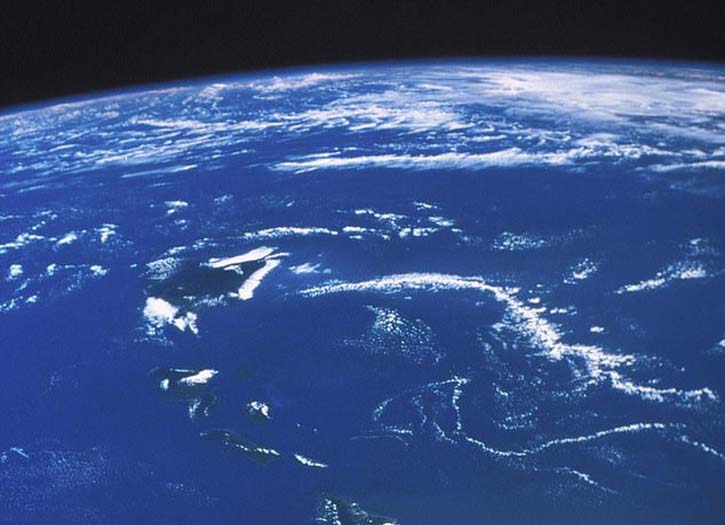Earth is swallowing
4 || risingbd.com

Risingbd Desk: Staggering amounts of water are being pulled deep into Earth’s interior as a result of tectonic activity.
And, scientists aren’t quite sure where it all ends up.
A new study using ocean-bottom seismographs across the Mariana Trench has found that Earth’s subduction zones drag down roughly three times more water than previously estimated.
According to the new calculations, the phenomenon amounts to 3 billion teragrams of water every million years, with one teragram alone equaling a billion kilograms, Live Science reports.
‘People knew that subduction zones could bring down water, but they didn’t know how much water,’ said lead author Chen Cai, from Washington University.
In the new study published to the journal Nature, the researchers used data from over a year’s worth of rumblings collected by 19 passive seismographs across the Mariana Trench.
They also looked at data from seven island-based seismographs.
This allowed for a more detailed picture of how the Pacific plate bends into the trench, revealing new insight on how the rocks hold onto water deep beneath the surface.
‘This research shows that subduction zones move far more water into Earth’s deep interior – many miles below the surface – than previously thought,’ said Candace Major, a program director in the National Science Foundation’s Division of Ocean Sciences.
‘The results highlight the important role of subduction zones in Earth’s water cycle.’
According to the team, the extreme pressure and temperature conditions cause water to become trapped in the rock as the plate travels down into the crust and upper mantle along fault lines.
While it was known that the subducting plate could hold water, researchers did not have a clear picture of how much water this amounts to – or how deep it goes.
‘Previous estimates vary widely in the amount of water that is subducted deeper than 60 miles,’ says aid Doug Wiens, the Robert S. Brookings Distinguished Professor in Earth and Planetary Sciences in Arts & Sciences.
‘The main source of uncertainty in these calculations was the initial water content of the subducting uppermost mantle.’
The researchers say the new method is far more precise, with seismic images that show the area of hydrated rock at the Mariana Trench extends nearly 20 miles beneath the seafloor.
And with that, they say, comes a lot of water locked within.
‘Previous conventions were based on active source studies, which can only show the top 3-4 miles into the incoming plate,’ Cai said.
‘They could not be very precise about how thick it is, or how hydrated it is. Our study tried to constrain that. If water can penetrate deeper into the plate, it can stay there and be brought down to deeper depths.’
At the Mariana Trench, the researchers estimate four times more water is dragged into the interior than previously thought.
On a global scale, they say it works out to be three times more water than thought.
‘If other old, cold subducting slabs contain similarly thick layers of hydrous mantle, then estimates of the global water flux into the mantle at depths greater than 60 miles must be increased by a factor of about three,’ Wiens said.
What exactly happens to the water after it’s pulled down into the trench remains unclear. It’s thought that most returns to the atmosphere as water vapor through faraway volcanic eruptions.
But, the new estimates suggest more water is being pulled into the interior than it lets out.
‘The estimates of water coming back out through the volcanic arc are probably very uncertain,’ Wines said. ‘This study will probably cause some re-evaluation.’
Source: BBC
risingbd/Nov 20, 2018/Mukul
risingbd.com























